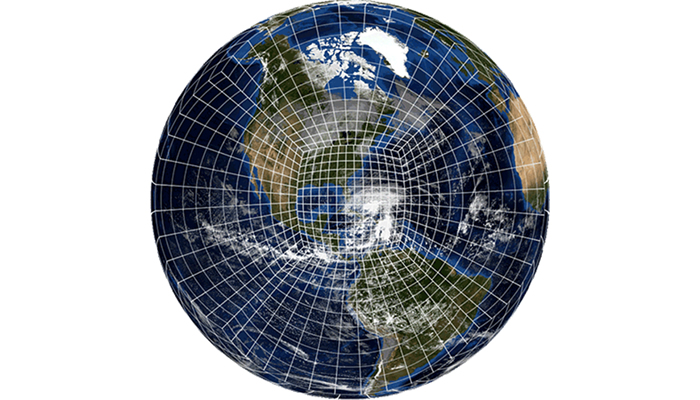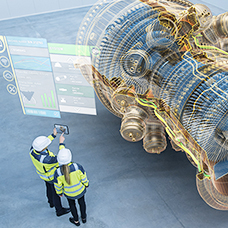
Applying AI to Climate Models, Space Traffic Management, and More
But it is not a silver bullet, and with great power comes great responsibility
 03-30-2020
03-30-2020
 SAIC
SAIC
 DATA ANALYTICS
DATA ANALYTICS
Artificial intelligence continues to improve and help solve more problems. Many people believe it’s a catch-all solution for some of our greatest challenges.
As an SAIC data scientist working with NASA, I like to be optimistic about the future of AI. I don’t believe that AI is — or will become — a miracle pill. But it is a great tool that I get to apply to some of NASA’s really tough scenarios.
What AI is and is not
AI is quietly in the background of countless processes and pieces of our lives without us realizing. Rosie the Robot may not be dusting our dresser and adding a wisecrack, but AI is behind the pinging alert on your phone to take an alternate route away from a traffic accident and the spam filter keeping you from receiving yet another email from a Nigerian prince with a financial opportunity of a lifetime.
To put it simply, AI uses clever mathematics, statistics, and data to do things that traditionally require human intelligence. It recognizes there can’t be that many Nigerian princes that would reach out to you. And it notes, based on other drivers’ behaviors, how you may get home faster by driving on that side street instead of being restricted to a single travel lane on the highway.
Stronger climate models
Without AI, I couldn’t help to speed up advanced climate models for NASA. By accelerating the computations, AI leverages the data on how different inputs generate different outputs. Traditional methods for this type of modeling are much slower than AI-enabled solutions.
NASA cannot accurately track how CO2 emissions impact climate change without AI. In a world impacted by high-paced change and fluctuating weather, we need AI-enabled solutions to correctly forecast shifts and variations in climate and weather patterns.

Space traffic management
Consumer space travel is growing closer to becoming a reality. As we deploy consumer spacecraft, they will enter space filled with more than 2,000 active satellites. There must be an assurance that there will be no collisions with those satellites and hundreds of thousands of manmade objects, from tiny bolts and screws to inactive satellites, zooming around Earth.
Current modeling paradigms will not cut it in an era of consumer space travel. Models cannot track space junk accurately, which slows down communications between satellites, clogs the RF spectrum, inhibits functionality of terrestrial programs that rely on those communications, and pollutes the night sky. To safely and successfully launch consumer spacecraft and avoid crashes with space junk, AI-enabled modeling is necessary.

Enabling more solutions
To get to a future with space cruises through the cosmos, our government policies need to catch up. We need better education mechanisms to help policymakers understand what AI is and is not and how their decisions enable or restrict its success. Developing the technology behind AI solutions is not the most difficult part; it is winning over policymakers and regulatory authorities.
A large caveat to policy and regulation is the ethical dilemma intrinsic to AI. If my self-driving car makes a bad decision while I’m behind the wheel, who — or what — is at fault? Should I have taken control? If an AI-regulated power grid goes out, who is responsible for ensuring the AI takes over and restores power?
Accountability is a weighty issue. That’s where policy comes into play, so that when — not if — an AI messes up, the appropriate parties are held accountable.
The deepening persistence of this gray area is why I’m so actively involved in outreach and education. I participate in many events where I encourage dialog around how AI will enhance or improve processes and methodologies. I never stop preaching how magnificent a tool AI can be if we let it. But the more we treat it as the precedent to Skynet, the farther away we are from a reality more akin to "Star Trek."
AI will not magically solve the woes our world faces. However, it will be the conduit through which scientists and engineers enable technologies beyond their current limits.




